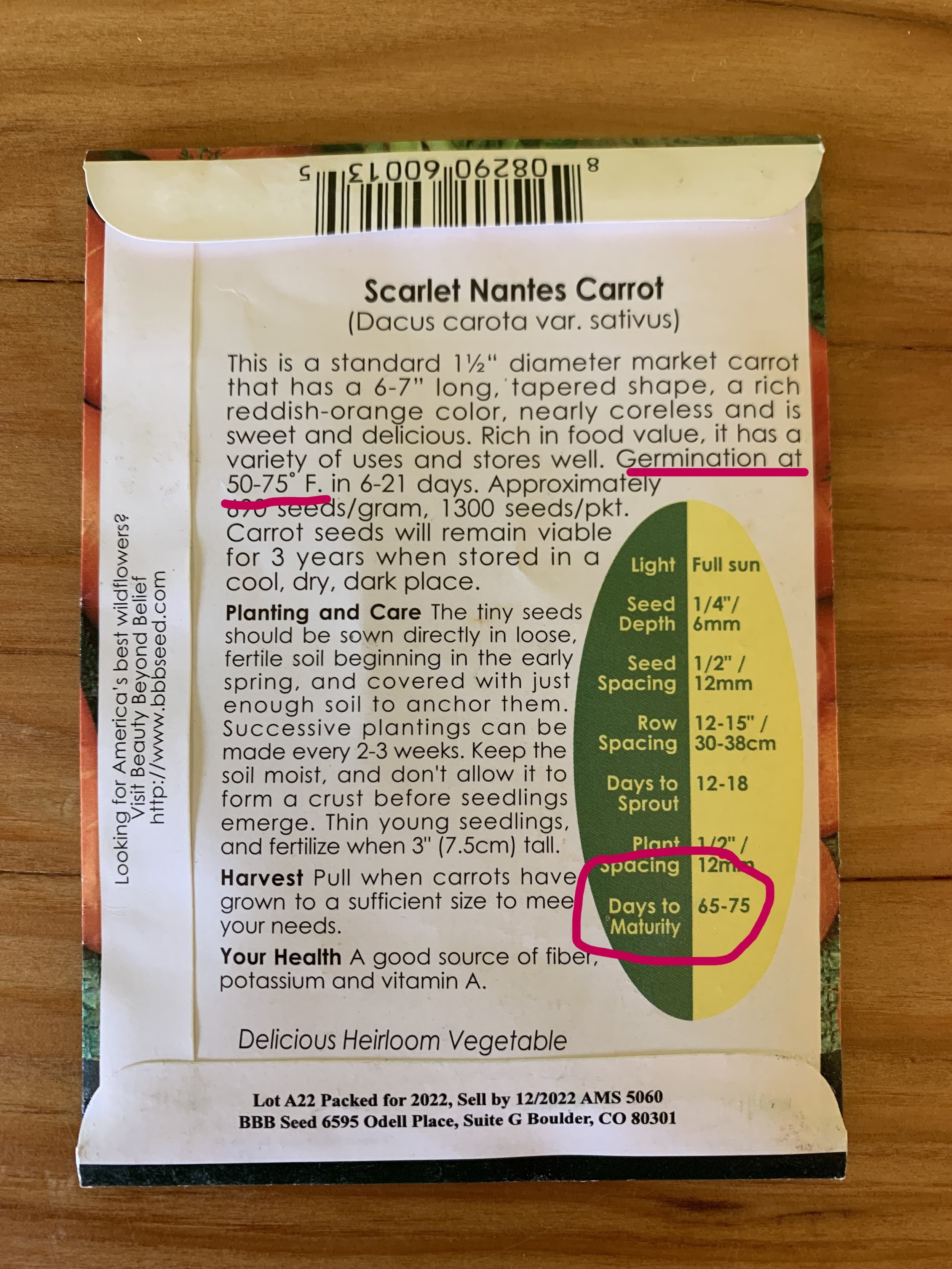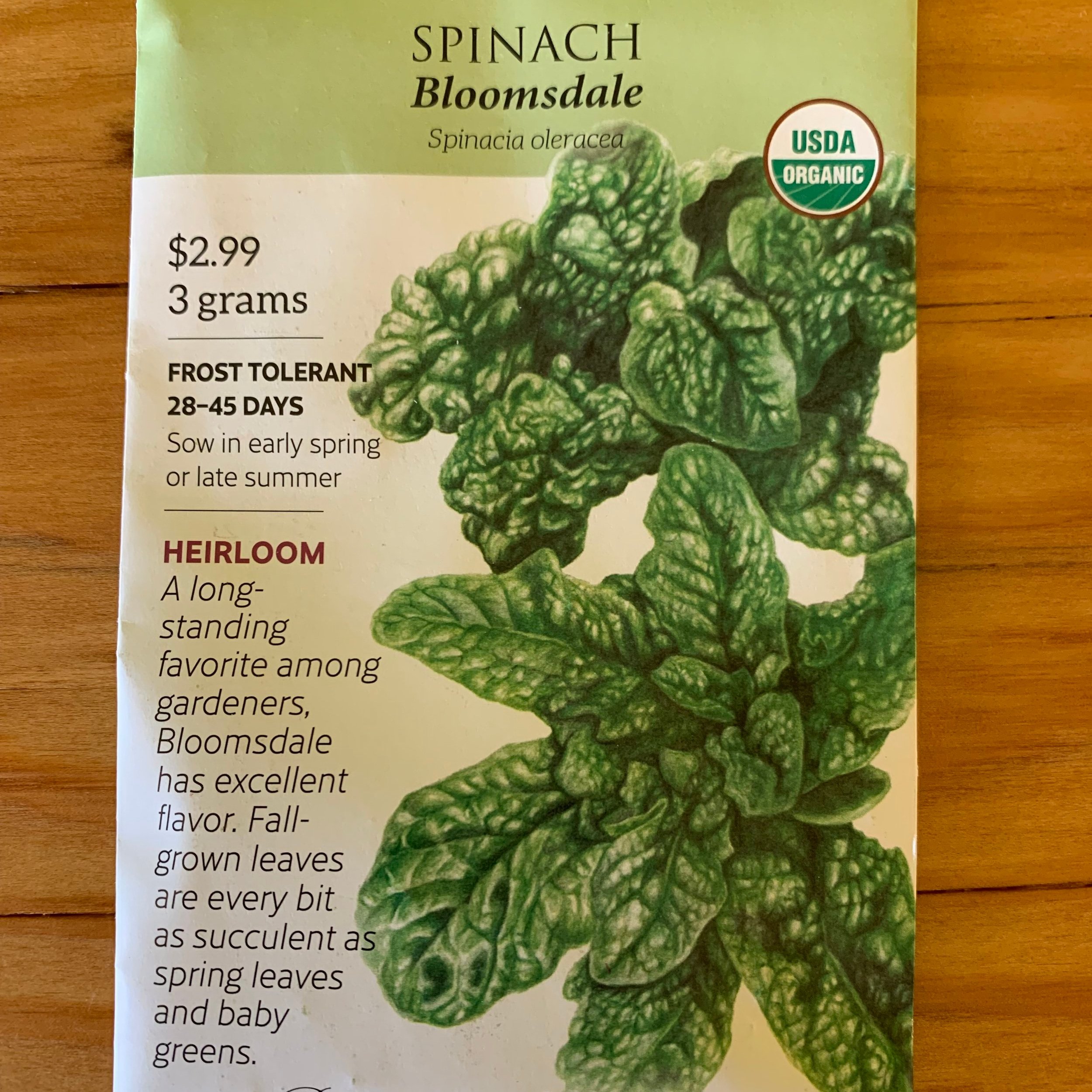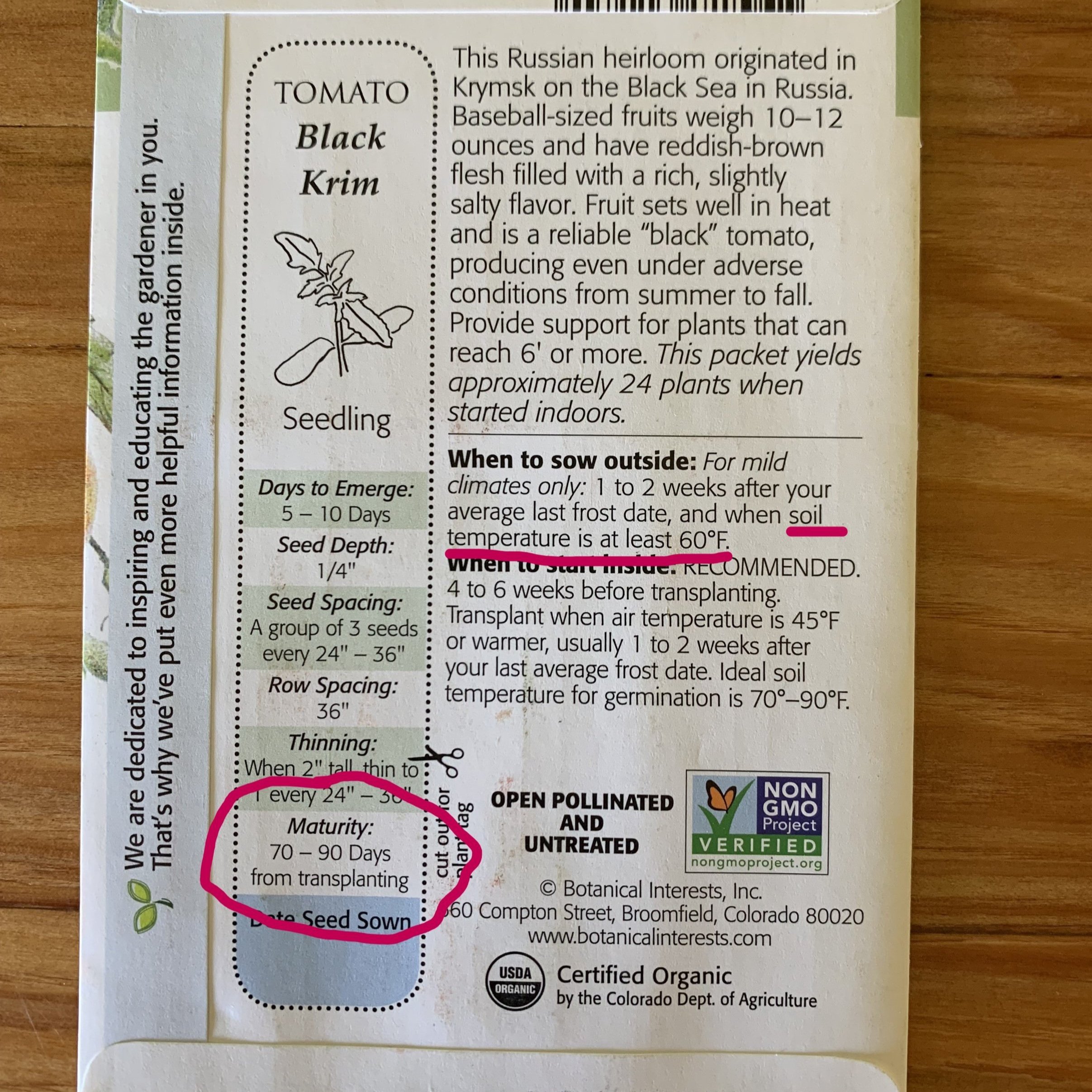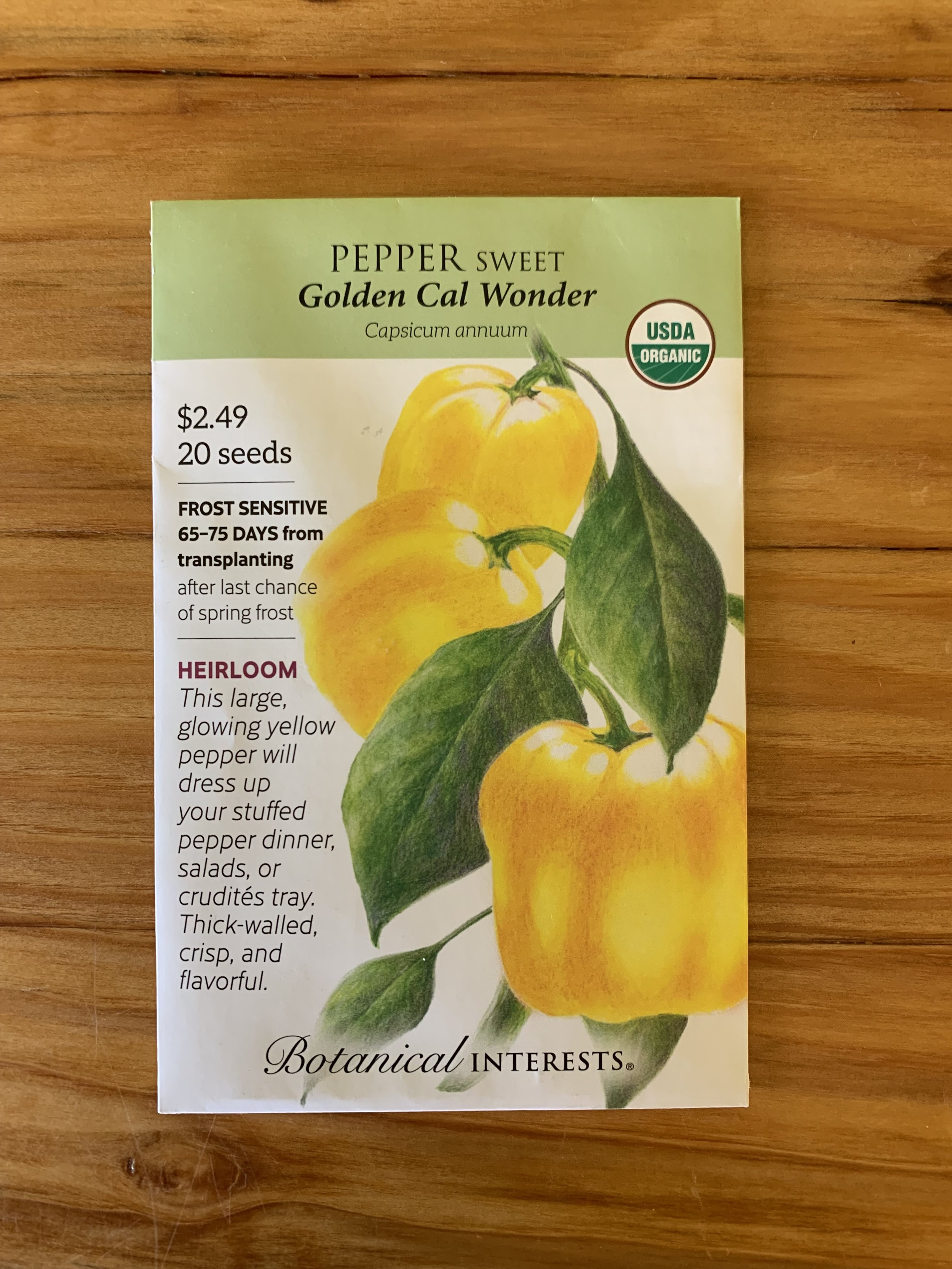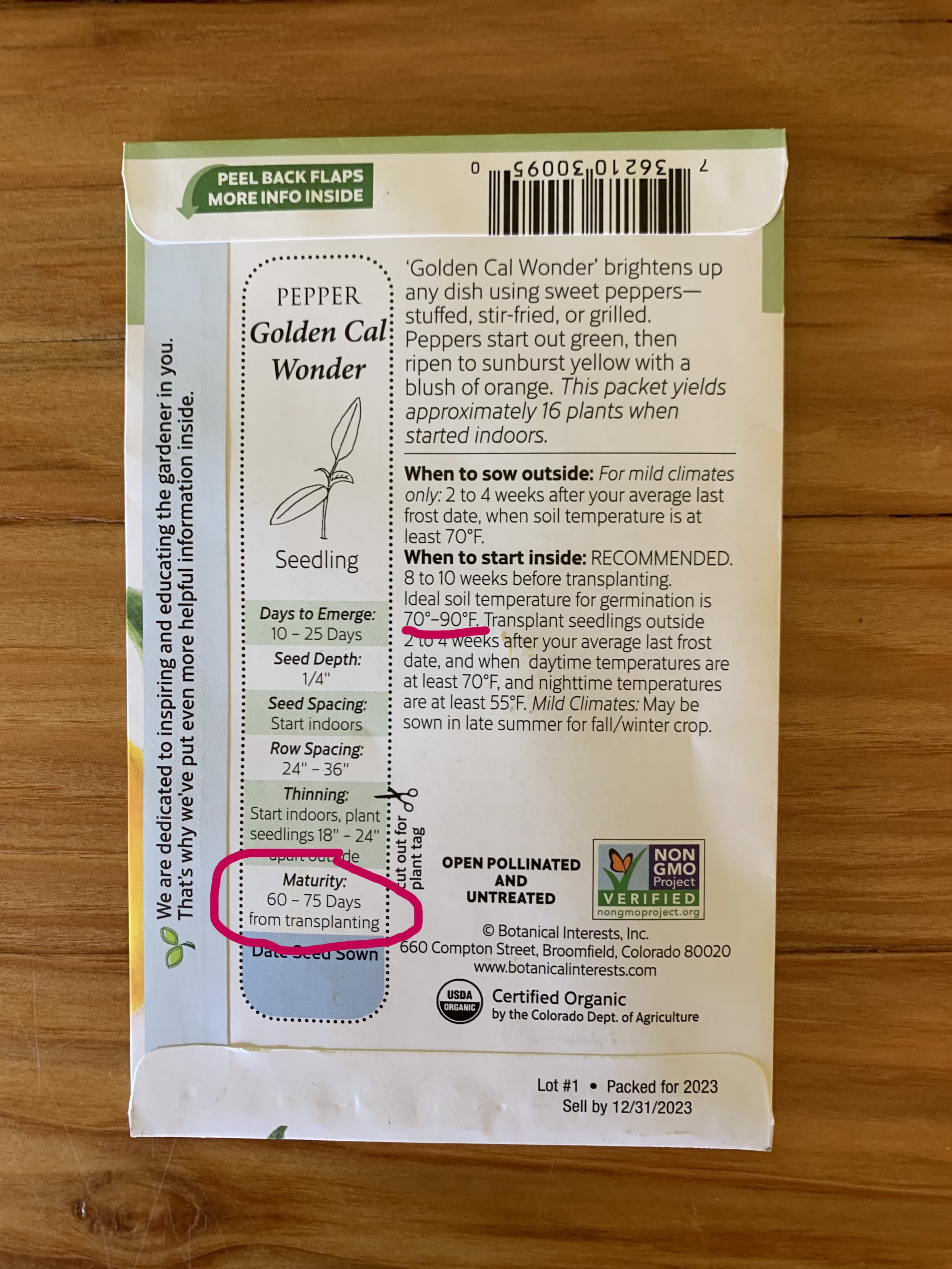When to Plant Guide
Is it time to get into the garden yet? When is too early to plant tomatoes? What crops can you plant for an early harvest? In this post we will review some of the basic things you’ll need to understand so you can plant like a pro in our climate.
Average last frost: May 18
Average first frost: Sept 22
Frost Dates and Days to Maturity
As gardeners in Missoula, our growing season is defined by frost dates! Our last and first frost dates determine what kinds of crops we can plant, when we plant them, and how long we can harvest from them. The average last frost in Missoula is May 18 and the average first frost is Sept 22. This means we have around 127 frost-free days, or about four months.
Some plants can tolerate frost, like carrots or kale, but many of our favorites, like tomatoes, cucumbers, or peppers, can’t handle any cold at all! This means that when we’re planning our garden, we want to make sure all of our crops have enough time to mature and produce before it gets too cold.
You’ll commonly find the term ‘days to maturity’ on seed packets - this refers to the number of days from when you plant to when you can first harvest.
For direct seeding (planting seeds directly in the ground - we’ll talk more about this later), you want to plant crops with fewer than 100 days to maturity so that you guarantee at least good month of harvesting.
For transplanted crops, look for varieties with 80 or fewer days to maturity, since that date starts when you transplant them.
Cool vs. Warm Season Crops
One of the first things you can do to determine what plants to plant when is to figure out which of your crops are “cool” or “warm” season crops. These categories generally differentiate between frost-tolerant and non-frost-tolerant crops.
Cool season crops…
Some of the first ones you can plant.
Do well in the cooler temperatures of early spring and fall
Mature quickly for spring/fall harvests.
Don’t mind colder soils (50-70 degrees Fahrenheit), so it’s okay to direct seed many of these crops once the ground thaws. In fact, many of them can be planted before your last frost of the season.
Warm season crops…
Planted later in the spring and thrive in warmer temperatures.
Best grown as starts indoors or in a greenhouse and transplanted into the ground when soil temperatures are warmer, above 70 degrees - they do not do well in colder soils!
Should be ready for harvest in the summer, but many of them take longer to mature. One notable exception is summer squash (like zucchini) and cucumbers - these plants are so fast-growing that you can plant them directly into warmer soils and you will still get a good harvest from them.
Bringing It All Together: Seeding vs. Transplanting
With these factors in mind, we can decide which crops are okay to plant directly in the ground and which should be grown from seed indoors (or bought from a farm/store!) and transplanted outside later.
Cool season crops with short days to maturity:
As you can see, both carrots and spinach have shorter days to maturity, especially the spinach! You can also see that both of these crops are fine being planted in cooler soil temperatures (50-75 degrees). These crops should be directly seeded into the ground.
In contrast, check out the warm season crops:
Tomatoes and peppers usually like being planted in warmer soil temperatures (70+ degrees). Both of these have longer days to maturity, but they are still generally below the 80-day recommended threshold, which means you should be able to get a good harvest from them.
If you’re looking to buy starts to transplant in your garden, we recommend buying from local farmers at farmers’ markets or farm stands. These will be the same plants that farmers are putting in their fields, so you know they are varieties that do well in our climate. The farmers will also be able to tell you other details about the varieties and give you planting advice.
For more information on selecting seed varieties (either to direct seed or to start indoors) and how to start seeds indoors, check these out:
Create a Planting Plan
With all this information under your belt, you should be able to plan out your planting schedule! Keep an eye on the weather, though. May 18th is the average last frost, but it could frost later than that! If you want to plant your warm season crops but you see cold weather in the forecast, it’s worth it to wait a few days. Your baby plants will do better being planted later when there’s no chance of a freeze.
If you have a thermometer, you can measure soil temperature and determine when to plant. Otherwise, you can use the average last frost day and seed packet instructions. For instance, take these spinach seeds we looked at earlier. They can be planted 4-6 weeks before the average last frost. That means you could sow as early as April 6th! Looking at their days to maturity (28-45), if you plant on April 6th you can expect to harvest baby spinach by May 4th and mature spinach by May 21st.
We recommend keeping a record of your planting plan and a map of where and when you plant things in your garden! Not only will this remind you when it’s time to plant, but these notes will inform your decisions in future years as well. For a more extensive planting guide with details on many different crops, check out this one from the MSU extension office:
MSU Extension Vegetable Planting Guide
Now you know the basics of when to plant! For more information on planting and maximizing your garden harvest, check out some of these blog posts:




